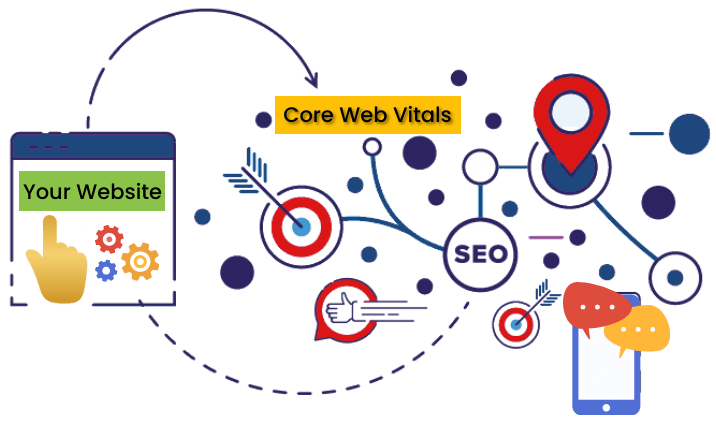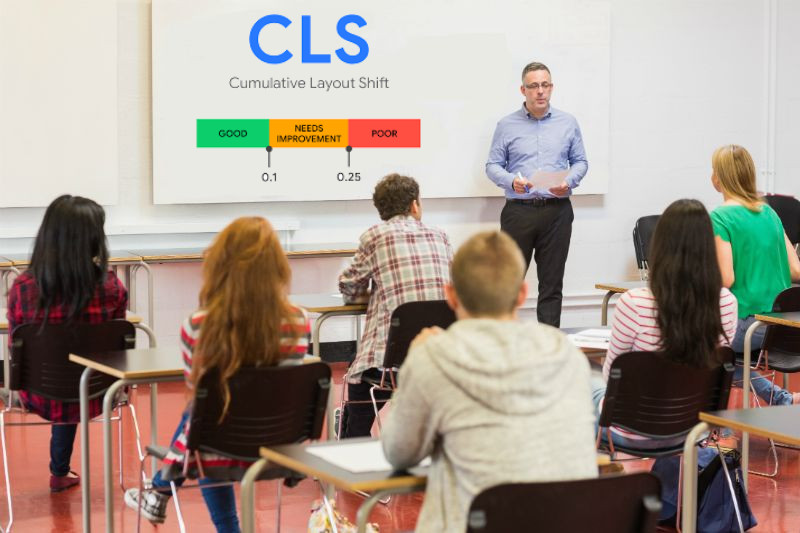
Google Core Web Vitals
You’re probably asking, “What exactly are the Google Core Web Vitals?” The answer is, they are Google’s latest set of performance metrics used to measure and quantify how a web page impacts the experience of the user.
To put it another way, Google Core Web Vitals is used to analyze the health of a website and create a simplified representation of how well-optimized that site might be.
In terms of user experience, these latest metrics concentrate on when specific activities are complete, including what is interactive or visually affected as these activities occur. Scores can shift as users interact with your page. When activities occur faster, you get better scores.
If you’re used to reading and learning about Google Algorithms, then you know how complicated and intimidating the Google Rocket Scientists can be. In this case, they simplified a small portion of the Core Web Vitals by giving the process a simple grading system as noted below.
- Good (Passed)
- Needs Improvement (Not failed but not passed)
- Failed (Self-explanatory)

How Does Google Do It?
The next question is, “How does the Google Core Web Vitals compute or come up with those three scores?” That’s a great question! These currently use three evolving metrics referred to as:
- LCP – Largest Contentful Paint
- FID – First Input Delay
- CLS – Cumulative Layout Shift
You knew this was coming. The acronyms. The confusing terms and then the well throughout definitions and explanations? Here we go yet again; let’s dig in and figure these metrics out.

LCP - Largest Contentful Paint
This metric boils down to how much time it takes a website’s page to present the largest section of content of that page on the user’s screen. The clock starts ticking once the page is requested; at that moment, the time stamp is how long it takes for that content to be fully loaded and ready for interaction.
Google specifies that the Largest Contentful Paint metric only considers the content above that page’s fold; that is defined as all of the content that presents itself without any scrolling.
FID - First Input Delay
This metric is all about measuring the time-lapse from when a user initially interacts with a website’s page and the timeframe it takes the browser to respond to that request. For example, once a person taps on a link or button, how long does it take for that web page to render their request? The answer is the FID!
CLS - Cumulative Layout Shift
In layman’s terms, the CLS measures the unplanned repositioning of web page elements as the web page is in the process of being downloaded. This metric gets pretty dicey simply because there may be variables (i.e., third-party ads, scripts, dynamically injected content, etc.) that you have no control over. Currently, Google provides five factors that cause a failure or needs improvement CLS score.
- Images that have no dimensions
- iframes, Ads, and embeds that have no dimensions
- Dynamically injected content ( YoutTube Videos, Tweets, etc.)
- Web Fonts (Always use rel-“preload for offending fonts)
- Actions are awaiting a network response before updating DOM
How Does One Get Their Google Core Web Vitals Score?
This Is How We Do It!
At SEO For Local, we use a combination of these three professional page graders; we use others, but these are our mainstays.
Using those tools, you can get a definitive picture of how your web pages measure up to the Google Core Web Vitals. In the meantime, you must understand, the GCWVs have not rolled out across the entire World Wide Web. That means (theoretically speaking) you could test a page, and it passes, but when the Core Web Vitals rolls out in your neck of the woods, you could fail. It’s just a point to take into consideration.
Google Is Changing The Game Yet Again
Rest assured, as time progresses, Google may add additional metrics, but the underlying process will remain the same; Google is officially moving away from indexation based solely on keywords and backlinks.
Moreover, what is becoming glaringly apparent is how Google now wants its search results to be user-friendly. Consequently, the days are over of quickly slapping a website together with no consideration to user experience. People launching such websites will find that they no longer have the ability to rank and bank or churn and burn.
Be On The Lookout For The Google Core Web Vitals Roll Out
Remember, as the Google Core Web Vitals roll out, web admins and site owners will likely start seeing changes in their rankings sitewide. Google wants to ensure that its search results are as usable and user-friendly as possible. Google is pulling together its various ranking factors in a more holistic approach and making it easier for Google users to get what they want from the SERPs.
The Big G has plans to release Core Web Vitals updates annually to prevent the goalposts from moving too often and maintain a competitive balance for site developers and SEOs. Hopefully, Google will transfer this information to Google Search Console sometime soon; that way, SEOers can get the results within the GCS platform. I am hoping this article presented a clear and concise picture as to Google Core Web Vitals.

